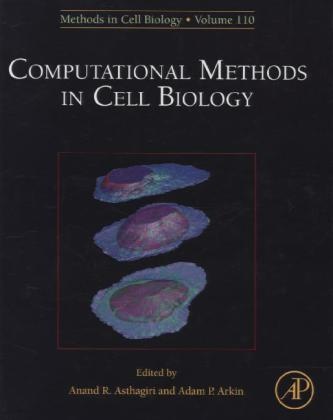Read more
Klappentext Computational methods are playing an ever increasing role in cell biology. This volume of Methods in Cell Biology focuses on Computational Methods in Cell Biology and consists of two parts: (1) data extraction and analysis to distill models and mechanisms, and (2) developing and simulating models to make predictions and testable hypotheses. Zusammenfassung Computational methods are playing an ever increasing role in cell biology. This volume consists of two parts: data extraction and analysis to distill models and mechanisms! and developing and simulating models to make predictions and testable hypotheses. It focuses on computational methods in cell biology. Inhaltsverzeichnis Principles of model building: an experimentation-aided approach to development of models for signaling networks Integrated Inference and Analysis of Regulatory Networks From Multi-Level Measurements Swimming upstream: identifying proteomic signals that drive transcriptional changes using the interactome and multiple "-omics" datasets A framework for modeling the relationship between cellular steady-state and stimulus-responsiveness Stochastic Modeling of Cellular Networks Quantifying Traction Stresses in Adherent Cells CellOrganizer: Image-derived Models of Subcellular Organization and Protein Distribution Spatial Modeling of Cell Signaling Networks Stochastic models of cell protrusion arising from spatiotemporal signaling and adhesion dynamics Nonparametric Variable Selection and Modeling for Spatial and Temporal Regulatory Networks Quantitative Models of the Mechanisms that Control Genome-Wide Patterns of Animal Transcription Factor Binding Computational Analysis of Live Cell Images of the Arabidopsis thaliana Plant Multi-scale modeling of tissues using CompuCell3D Multiscale Model of Fibrin Accumulation on the Blood Clot Surface and Platelet Dynamics
List of contents
- Principles of model building: an experimentation-aided approach to development of models for signaling networks
- Integrated Inference and Analysis of Regulatory Networks From Multi-Level Measurements
- Swimming upstream: identifying proteomic signals that drive transcriptional changes using the interactome and multiple "-omics" datasets
- A framework for modeling the relationship between cellular steady-state and stimulus-responsiveness
- Stochastic Modeling of Cellular Networks
- Quantifying Traction Stresses in Adherent Cells
- CellOrganizer: Image-derived Models of Subcellular Organization and Protein Distribution
- Spatial Modeling of Cell Signaling Networks
- Stochastic models of cell protrusion arising from spatiotemporal signaling and adhesion dynamics
- Nonparametric Variable Selection and Modeling for Spatial and Temporal Regulatory Networks
- Quantitative Models of the Mechanisms that Control Genome-Wide Patterns of Animal Transcription Factor Binding
- Computational Analysis of Live Cell Images of the Arabidopsis thaliana Plant
- Multi-scale modeling of tissues using CompuCell3D
- Multiscale Model of Fibrin Accumulation on the Blood Clot Surface and Platelet Dynamics

